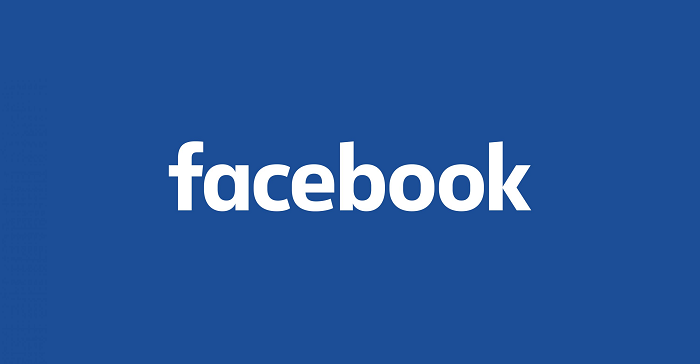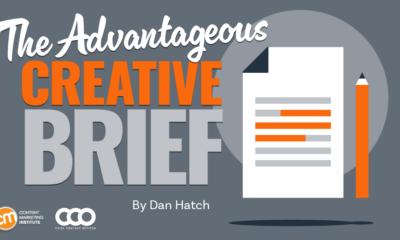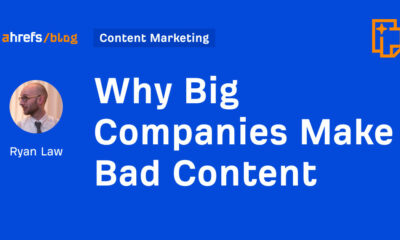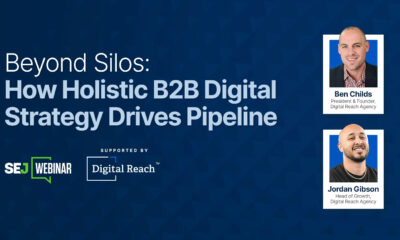SOCIAL
Meta Shares New Insights into How to Maximize Your Content Reach on Facebook

This is interesting – today, Meta has published a new overview of how creators can maximize their reach on Facebook, and connect with more potential fans via News Feed distribution.
And while the advice is focused on creators, the tips are universal, in relation to how the News Feed algorithm works, and if you are looking to get more reach to your target audience on Facebook, these notes will definitely help.
But then again, how exactly you do that may not always be a net positive for society.
I’ll explain.
First off, as Meta has communicated in the past, the Facebook News Feed algorithm primarily relies on these key elements when deciding who sees what content”
- What content has been posted? What posts are available from friends, other creators and Pages that we can show?
- Who might like this content? We consider a multitude of signals such as who posted the content, when it was posted, what was the topic and past user behavior, among others.
- How likely are people to engage with the post? We try to predict how likely a given person is to engage with your post and find it meaningful. We make a variety of these predictions for each piece of content.
- How interested will the audience be in this post? Based on all of the data we have gathered on the post, which pieces of content should get priority?
So engagement is the key focus, showing people more content that they’ll click-through on, comment on, share, Like, etc.
That remains a potentially problematic element, depending on how the algorithm weighs each. If the algorithm favors comments, for example, that then incentivizes people and Pages to post things that will spark debate and discussion – which can be positive, in some respect, but can also be very divisive, and lead to further angst and opposition.
In any event, these are the considerations that the algorithm weighs, which subsequently means they’re what you should also consider if you want to get maximum reach and response with your Facebook posts.
But this part is especially interesting in considering Facebook engagement in 2022 specifically.
In its explanation, Meta says that it now views Facebook engagement in two ways:
- Connected Distribution – Your posts are seen by those who follow you on Facebook. This is your core audience on the platform.
- Unconnected Distribution – Your posts are seen by those who don’t follow you, but may be interested in your content. This type of distribution can come through other users sharing and resharing your posts or from our recommendations in our “Suggested for You” sections.
Now, both of these types of engagement have existed in Facebook for years, but it’s the latter element that’s now getting more specific focus, as Meta looks to pump more AI-fueled content recommendations into your feed.
Indeed, back in July, Meta CEO Mark Zuckerberg flagged the company’s plan to double the amount of AI-recommended content in user feeds by the end of the year.
As per Zuckerberg:
“Right now, about 15% of content in a person’s Facebook feed and a little more than that of their Instagram feed is recommended by our AI from people, groups, or accounts that you don’t follow. We expect these numbers to more than double by the end of next year.”
In other words, ‘Unconnected Distribution’ is set to become a much bigger factor in determining your Facebook post reach – which means that businesses need to consider how Unconnected Distribution also works in the broader process.
Which Meta has provided some new guidance on – in order to maximize Unconnected Distribution, Meta says that you should:
How, exactly, each of these elements factors into Facebook’s ‘Unconnected Distribution’ algorithms is not clear, but the pointers indicate that Facebook will be looking to promote as much original content as it can (however it assesses such), while optimizing for engagement remains a key consideration.
Which is easier said than done. Of course, you want to post things that generate more likes and shares, and boost your reach. But unfortunately, the easiest way to do this, as you likely know from your own experience, is to incite rage and anger, while happiness and joy can also provide that emotional kick that’ll incite people to interact, however they may choose.
Various studies have shown that anger is the emotion that spreads most easily over social media, with joy coming in second. Again, in order to incite a reaction, you need to strike an emotional chord with your content, and these are the two instinctive responses most likely to get people typing, and in particular, sharing online.
Which, again, makes sense. If you read something that really annoys you, you feel a compulsion to respond to it, which will then see you inadvertently amplifying that content, while funny memes and trends also spread quickly across the web.
Post an update about how good your product is, and no one will care, but make a few snarky responses via tweet and you can quickly become the talk of the internet for that day, albeit with a high level of reputational risk.
This is the way the web works, based on algorithmic amplification that’s designed to keep people in each app for as long as possible, at all times. Poking your emotions is what, essentially, algorithms are all about, regardless of any other explanations about how they merely reflect human nature and interest, and how algorithms are ‘content agnostic’ and are not designed to amplify negative behaviors.
That argument is irrelevant, because intent and effect are two vastly different things, and there’s no way that anyone could argue that algorithms don’t end up boosting more divisive, argumentative content, regardless of their design.
Publishers know it, brands know it, and this overview once again underlines the fact that if you want to maximize your Facebook reach – through either Connected or Unconnected Distribution – you need to get people talking.
How you do that is by aligning content with emotional triggers, which can be positive, of course, in sharing more joyful, happy posts. But anger works too – which is less than ideal for creators, publishers, society in general, etc.
But these are the factors that you need to consider when you’re working on maximizing your Facebook performance.
You can read Meta’s full overview for creator distribution here.
SOCIAL
Snapchat Explores New Messaging Retention Feature: A Game-Changer or Risky Move?

In a recent announcement, Snapchat revealed a groundbreaking update that challenges its traditional design ethos. The platform is experimenting with an option that allows users to defy the 24-hour auto-delete rule, a feature synonymous with Snapchat’s ephemeral messaging model.
The proposed change aims to introduce a “Never delete” option in messaging retention settings, aligning Snapchat more closely with conventional messaging apps. While this move may blur Snapchat’s distinctive selling point, Snap appears convinced of its necessity.
According to Snap, the decision stems from user feedback and a commitment to innovation based on user needs. The company aims to provide greater flexibility and control over conversations, catering to the preferences of its community.
Currently undergoing trials in select markets, the new feature empowers users to adjust retention settings on a conversation-by-conversation basis. Flexibility remains paramount, with participants able to modify settings within chats and receive in-chat notifications to ensure transparency.
Snapchat underscores that the default auto-delete feature will persist, reinforcing its design philosophy centered on ephemerality. However, with the app gaining traction as a primary messaging platform, the option offers users a means to preserve longer chat histories.
The update marks a pivotal moment for Snapchat, renowned for its disappearing message premise, especially popular among younger demographics. Retaining this focus has been pivotal to Snapchat’s identity, but the shift suggests a broader strategy aimed at diversifying its user base.
This strategy may appeal particularly to older demographics, potentially extending Snapchat’s relevance as users age. By emulating features of conventional messaging platforms, Snapchat seeks to enhance its appeal and broaden its reach.
Yet, the introduction of message retention poses questions about Snapchat’s uniqueness. While addressing user demands, the risk of diluting Snapchat’s distinctiveness looms large.
As Snapchat ventures into uncharted territory, the outcome of this experiment remains uncertain. Will message retention propel Snapchat to new heights, or will it compromise the platform’s uniqueness?
Only time will tell.
SOCIAL
Catering to specific audience boosts your business, says accountant turned coach

While it is tempting to try to appeal to a broad audience, the founder of alcohol-free coaching service Just the Tonic, Sandra Parker, believes the best thing you can do for your business is focus on your niche. Here’s how she did just that.
When running a business, reaching out to as many clients as possible can be tempting. But it also risks making your marketing “too generic,” warns Sandra Parker, the founder of Just The Tonic Coaching.
“From the very start of my business, I knew exactly who I could help and who I couldn’t,” Parker told My Biggest Lessons.
Parker struggled with alcohol dependence as a young professional. Today, her business targets high-achieving individuals who face challenges similar to those she had early in her career.
“I understand their frustrations, I understand their fears, and I understand their coping mechanisms and the stories they’re telling themselves,” Parker said. “Because of that, I’m able to market very effectively, to speak in a language that they understand, and am able to reach them.”Â
“I believe that it’s really important that you know exactly who your customer or your client is, and you target them, and you resist the temptation to make your marketing too generic to try and reach everyone,” she explained.
“If you speak specifically to your target clients, you will reach them, and I believe that’s the way that you’re going to be more successful.
Watch the video for more of Sandra Parker’s biggest lessons.
SOCIAL
Instagram Tests Live-Stream Games to Enhance Engagement

Instagram’s testing out some new options to help spice up your live-streams in the app, with some live broadcasters now able to select a game that they can play with viewers in-stream.
As you can see in these example screens, posted by Ahmed Ghanem, some creators now have the option to play either “This or That”, a question and answer prompt that you can share with your viewers, or “Trivia”, to generate more engagement within your IG live-streams.
That could be a simple way to spark more conversation and interaction, which could then lead into further engagement opportunities from your live audience.
Meta’s been exploring more ways to make live-streaming a bigger consideration for IG creators, with a view to live-streams potentially catching on with more users.
That includes the gradual expansion of its “Stars” live-stream donation program, giving more creators in more regions a means to accept donations from live-stream viewers, while back in December, Instagram also added some new options to make it easier to go live using third-party tools via desktop PCs.
Live streaming has been a major shift in China, where shopping live-streams, in particular, have led to massive opportunities for streaming platforms. They haven’t caught on in the same way in Western regions, but as TikTok and YouTube look to push live-stream adoption, there is still a chance that they will become a much bigger element in future.
Which is why IG is also trying to stay in touch, and add more ways for its creators to engage via streams. Live-stream games is another element within this, which could make this a better community-building, and potentially sales-driving option.
We’ve asked Instagram for more information on this test, and we’ll update this post if/when we hear back.
-
SEARCHENGINES7 days ago
Daily Search Forum Recap: April 29, 2024
-
SEARCHENGINES6 days ago
Daily Search Forum Recap: April 30, 2024
-

 MARKETING5 days ago
MARKETING5 days agoHow To Develop a Great Creative Brief and Get On-Target Content
-

 SEO7 days ago
SEO7 days agoGoogle’s John Mueller On Website Recovery After Core Updates
-

 SEO5 days ago
SEO5 days agoWhy Big Companies Make Bad Content
-

 WORDPRESS5 days ago
WORDPRESS5 days ago13 Best Fun WordPress Plugins You’re Missing Out On
-

 SEO6 days ago
SEO6 days agoOpenAI To Show Content & Links In Response To Queries
-

 SEO5 days ago
SEO5 days agoHow To Drive Pipeline With A Silo-Free Strategy










You must be logged in to post a comment Login